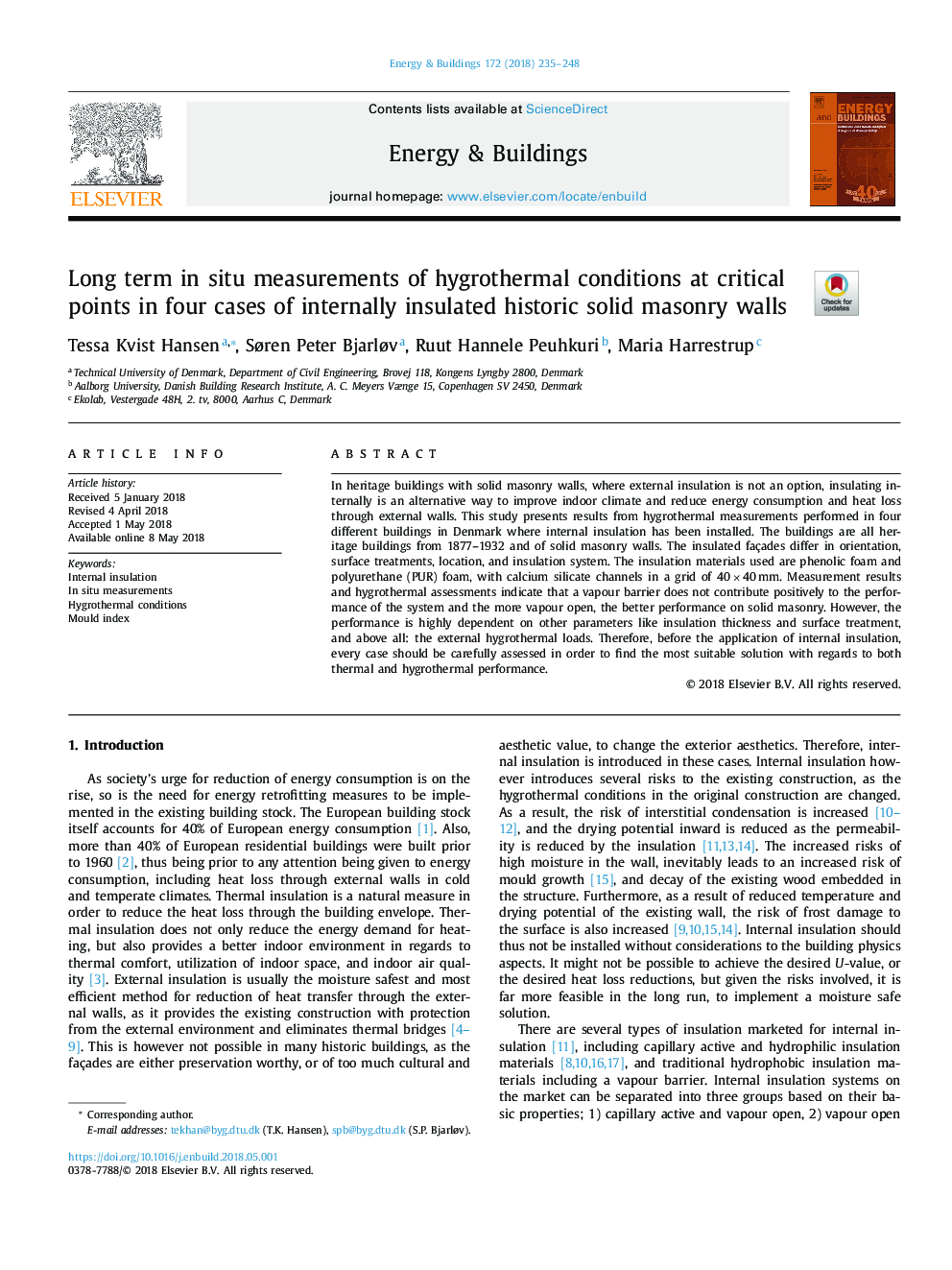| Article ID | Journal | Published Year | Pages | File Type |
|---|---|---|---|---|
| 6727516 | Energy and Buildings | 2018 | 14 Pages |
Abstract
In heritage buildings with solid masonry walls, where external insulation is not an option, insulating internally is an alternative way to improve indoor climate and reduce energy consumption and heat loss through external walls. This study presents results from hygrothermal measurements performed in four different buildings in Denmark where internal insulation has been installed. The buildings are all heritage buildings from 1877-1932 and of solid masonry walls. The insulated façades differ in orientation, surface treatments, location, and insulation system. The insulation materials used are phenolic foam and polyurethane (PUR) foam, with calcium silicate channels in a grid of 40â¯Ãâ¯40â¯mm. Measurement results and hygrothermal assessments indicate that a vapour barrier does not contribute positively to the performance of the system and the more vapour open, the better performance on solid masonry. However, the performance is highly dependent on other parameters like insulation thickness and surface treatment, and above all: the external hygrothermal loads. Therefore, before the application of internal insulation, every case should be carefully assessed in order to find the most suitable solution with regards to both thermal and hygrothermal performance.
Related Topics
Physical Sciences and Engineering
Energy
Renewable Energy, Sustainability and the Environment
Authors
Tessa Kvist Hansen, Søren Peter Bjarløv, Ruut Hannele Peuhkuri, Maria Harrestrup,
